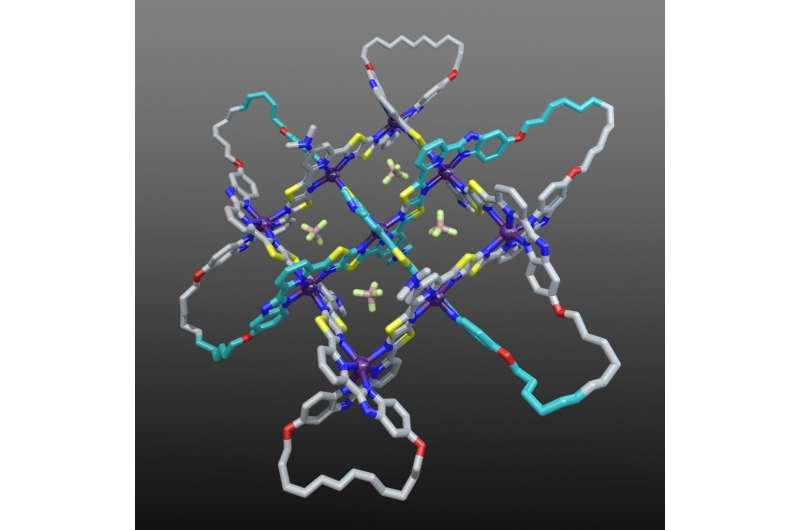David Leigh, University of Manchester.
Scientists have developed a way of braiding three molecular strands enabling tighter and more complex knots to be made than has previously been possible.
The paper, published in Nature Chemistry reports the synthesis of a new type of molecular knot, called an endless knot (or 7-4 knot). This type of knot cannot be made from helices—simply twisting strands together and joining the ends—a technique used to make complex molecular knots before.
A team, from the University of Manchester, employed a 3x3 interwoven molecular grid as an intermediate and key structure—they solved this key structure using single-crystal X-ray diffraction techniques on Diamond's I19 beamline. The bright synchrotron light on I19 was fundamental to the discovery as without it there would not be proof that the knot strands were woven in the correct way.
Professor David Leigh, from the University of Manchester, said: "Weaving molecular strands is useful not just for making iconic structures like the endless knot, but also for being able to weave polymer chains to make new materials. Without the X-ray structure from Diamond, which revealed the interwoven grid architecture, we wouldn't know how the strands fit together or why they weave. With that structure we have real experimental insights that will allow us, and others, to design other woven knots, polymers and materials."
Dr. David Allan, principal beamline scientist on I19, said:
"The single-crystal X-ray diffraction techniques employed on beamline I19 provide an unrivaled way of appreciating the beauty of the natural world at the atomic level and offer a means of unraveling, often exquisite, molecular structure. The Leigh group have employed a molecular engineering approach to weave intricately laced knot-like molecules and, once encouraged to assemble into crystals, they have used I19 to determine how the atoms within the knots are positioned and linked together with great precision. This provides an insight into the atomic bonding forces involved in the assembly of these complex molecules as well as offering clues for a more tailored approach to the synthesis of molecular form and shape."
The endless knot is a basic motif of Celtic knotting, the smallest Chinese knot, and is one of the eight auspicious symbols (the Ashtamangala) common to many Eastern religions and philosophies, where it represents the union of wisdom and method. The practical significance of its preparation in molecular form include the lessons learnt from its synthesis, which opens the way for the bottom-up assembly of woven polymer chains and other knotted and entangled molecules and materials.
More information: David A. Leigh et al. A molecular endless (74) knot, Nature Chemistry (2020). DOI: 10.1038/s41557-020-00594-x
Journal information: Nature Chemistry
Provided by Diamond Light Source
























